The West is gripped by the offshoots of a deep-seated conflict in the Horn of Africa. Apparently, members of a notorious liberation front from Ethiopia are trying to continue a war worldwide that they lost on the ground – with brutal acts of violence against Eritreans. By Alfred Schlicht

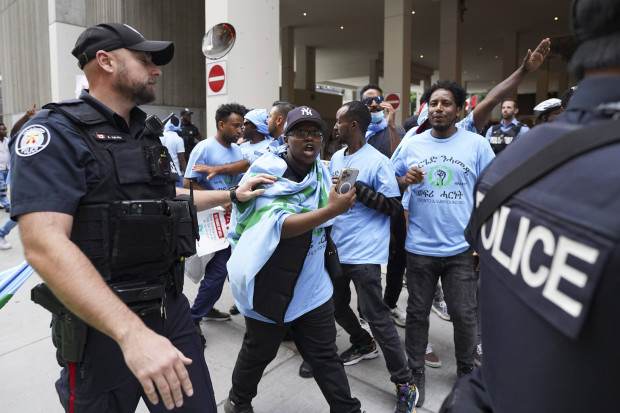 IMAGO / ZUMA Press
IMAGO / ZUMA Press
Erhebliches Aufsehen im Ausland erregte die Recherche von TE-Autoren zu den Angriffen der Befreiungsfront Tigray auf Eritreer in Gießen und in anderen Ländern. Wegen vielfacher Anfragen haben wir den Beitrag von Alfred Schlicht ins Englische übersetzt.
When riots took place around Eritrean cultural festivals in the Hessian town of Gießen in early July, and in the Swedish capital Stockholm in early August, this was often portrayed – also in the media – as a conflict between supporters of the Eritrean leadership and opposition members critical of the government in Asmara. In fact, the situation is much more complicated. President Isayas Afewerki has ruled Eritrea with a heavy hand for more than 30 years – and there has been opposition to him among Eritreans for longer. Eritrea festivals have been held all over the world for almost four decades. But there has never been violence around these Eritrea festivals, which are said to be linked to the regime in Asmara.
African conflicts on our streets
Such violence first took place in 2022 and intensified again this year. The suspicion is that the TPLF, the Tigray Liberation Front, which also triggered the internal Ethiopian conflict in 2020 through brutal acts of violence, is behind the violent excesses. Only when it became clear that the TPLF – the main culprit in the conflict according to the verdict of peace mediator Obasanjo – would lose the war against the central government in Addis Ababa did it look for other venues and victims. Numerous appearances on the net confirmed the suspicion that people from Tigray played a significant role in the violent mobs in Gießen, Stockholm, Toronto and Seattle. There were calls on social media to incite Eritreans against each other and to stir up existing tensions.
After the riots in Gießen, the leaders of the violent criminals met in the Frankfurt restaurant ‘Tigray’. It is common knowledge among emigrants that numerous people from Tigray apply for asylum in Germany as ‘Eritreans’ – but cluelessness about this prevails among the German public. Thus, in acts of violence and other crimes, the boundaries between genuine Eritrean opposition and people from Tigray who trade as Eritreans in our country and act as ringleaders must become blurred.
It is not easy for German authorities to distinguish here, especially since the same language is spoken in Tigray and Eritrea. Countries that have supposedly provided security and also material aid to those seeking protection are unhesitatingly turned into the scene of intra-African conflicts. The same people, who lack food and medicine in their home country of Tigray, attack the German police with stones they carry in backpacks. The hate speech on the web gives rise to fears that this could escalate further in the future.
Deep historical roots for TPLF hatred of Eritrea
The contrast between Tigray and Eritrea goes back a long way. Centuries ago, a distinction was made between the interior of the Ethiopian Empire and the ‘Mereb-Melash’ – the region (north) of the Mereb, which today is still (or again) the border river between Ethiopia and Eritrea. This northern region on the Red Sea was ruled by a semi-autonomous ruler, the ‘Bahr-Negash’, the ‘King of the Sea’, who at times also assumed the function of an agent of the Ethiopian emperor.
Tigray, on the other hand, was often dominated by the ‘Tigray Mekonnen’, the lord of Tigray. Often, however, local forces were able to assert themselves in both Eritrea and Tigray. There was no such thing as a cohesive, unified Eritrea, nor was there a consolidated state of Tigray.
A contrast between ‘Tigray’ and ‘Eritrea’ arose when the Italian establishment of the colony of Eritrea created a ‘hard’ border between the two areas. It was not until the mid-20th century that Eritrea was forcibly incorporated into the Ethiopian state, and in 1974 Ethiopia was taken over by a Marxist military dictatorship that continued and intensified the repressive policies of the deposed Emperor Haile Selassie against Eritrea. Since the 1960s, there has been armed resistance in Eritrea against Ethiopian tyranny.
Under the communist dictatorship, this resistance increased in scope and intensity – the situation in the country became worse and worse, and many Eritreans sought their salvation in flight during the 1970s and especially the 1980s. At that time, thousands had already reached Europe, where they sought and received asylum. The Eritrean Liberation Organization (EPLF) was the first of its kind, but with the increasingly brutal oppression of all of Ethiopia by the communist dictator Mengistu Haile Mariam, resistance was stirring in many parts of the extended state of Ethiopia. Following the Eritrean model, the Tigray People’s Liberation Front (TPLF) was formed. The TPLF received support from the more experienced EPLF.
Although there were differences between the two movements from the beginning, these were deliberately set aside in order to fight shoulder to shoulder against the common enemy. Early on, the TPLF had the idea of a “Greater Tigray“ that would also encompass large parts of Eritrea.
Tigray dominance in Ethiopia
Finally, the EPLF had completely liberated Eritrea in the early 1990s. The Eritreans now supported the Tigray Liberation Front in its advance on Addis Ababa. Only because of massive Eritrean aid did the TPLF forces succeed in taking power in Addis Ababa – in return for which Eritrea received independence. But the initial friendship between Asmara and Addis Ababa did not last long. The more independent and self-confident Eritrea became, the more hostile the Tigray-dominated government in Addis Ababa became.
More and more resentment arose, misunderstandings as well as problems of a technical-administrative nature – e.g. concerning the trade via the [Eritrean] Red Sea ports – turned into conflicts and escalated. Disdainfully, Ethiopian Prime Minister Meles Zenawi said that camels should swill the waters of Asab [until then the most important import and export port for Ethiopia, located in Eritrea] and turned to Djibouti as the main trading port. Violence occurred repeatedly along the long common border – both sides blamed each other for it. That Eritrea introduced its own currency seemed intolerable to the TPLF regime in Addis.
War in the Horn of Africa at the turn of the millennium
When outright war broke out in 1998, it was certainly due to the lack of a political debate culture in the Horn of Africa, the unwillingness to compromise, the emotional nature of the conflict and the lack of diplomatic procedures. The conflict was quickly brought to the level of heads of state or government, who came from liberation movements and armed conflicts for their part, and thus from a world in which backing down, giving in and compromising are seen as signs of weakness. Thus, ostensibly over small border divergences, the Eritrean-Ethiopian war broke out.
One of the fiercest and most costly conflicts, Africa has seen in recent times came to an end through international mediation: On June 18, 2000, the two warring parties signed a cease-fire agreement in Algiers. A border commission in The Hague was to determine the exact course of the border between the two adversaries. On April 13, 2002, the commission decided that Eritrea was entitled to the border village of Bademe, which was claimed by both sides and was in itself insignificant. The TPLF-dominated Ethiopian government did not accept this decision, did not return Bademe, and lied to its own people that the international arbitration ruling was in favor of Ethiopia.
Although the open war ended with the Algiers settlement, an ice age followed between the two countries. The war hadn’t ended yet, when 70,000 Eritreans living in Ethiopia were deported. Mothers were separated from their babies, old people were taken from their beds at night and put on buses, and many had to leave all their belongings behind. To be sure, there were also reverse expulsions of Ethiopians from Eritrea in response to this, but with fewer human rights violations and with the involvement of the Red Cross.
No war, no peace
The following two decades were characterized by a deadlock between the two states. There were no relations between the two neighbours, who could have complemented each other so well. Travel across the border was not possible, there were no telephone connections, no trade.
Eritrea largely retreated into itself, expanded its security arrangements, and saw its absolute priority as securing statehood and independence. The Ethiopian TPLF government, on the other hand, sought to connect with the West and thus resumed Ethiopia’s traditional policies from the imperial period, which had been interrupted by the Marxist military dictatorship. It thus distinguished itself positively in contrast to the regime it had replaced and also to Eritrea, which distrusted the West.
There were elections in Ethiopia, even if flawed, and the United States took the position that flawed elections were still better than no elections at all. Moreover, Ethiopia recommended itself as a reliable U.S. ally and waged an intensive war against the Islamist Shabaab militia in Somalia – it thus played a constructive role in the Horn of Africa in Western terms. Against this backdrop, there was little pressure from the international community to comply with the arbitration ruling of the International Boundary Commission and return the small territories on the border to Eritrea.
This meant a severe disappointment for Eritrea, which felt betrayed and left alone by the West. Eritrea was hit with sanctions amid accusations of supporting Somali Islamists. To counter these accusations, a parade of Somali recruits of the official Somali army trained in Eritrea was held in the presence of the Somali president. The purpose was to underscore Eritrea’s constructive contributions to stability in the Horn of Africa.
”Game over“: The stretched out hand of Abiy Ahmed
The fact that the Tigrayans, a minority of five to six percent of the Ethiopian population, dominated the 110-million-strong state was not communicable in the long run and also disturbed the image of democracy cultivated for international partners, above all the United States. For this reason, the TPLF placed representatives of other ethnic groups in high-ranking positions, such as prime minister. This is how Abiy Ahmed, an intelligence officer who is the son of a Muslim Oromo father and an originally Christian Amhara mother, came to be head of government. Abiy Ahmed, who was thought to be a compliant, loyal apparatchik based on his previous career, emancipated himself from Tigray tutelage and turned out to be an independent spirit.
By 2018, he had apparently consolidated his position sufficiently to reach out to Eritrea, officially recognize the international commission’s border settlement, and initiate a process of understanding and normalization between the two hostile neighbours. As a result, he succeeded in reducing the TPLF’s role in the government apparatus, releasing political prisoners and easing censorship. The TPLF’s dominance slipped away, and the narrative of the ‘democratic’ TPLF state received significant scratches. Initially, Abiy Ahmed was celebrated internationally and awarded the Nobel Peace Prize as a man of reconciliation.
The Eritrean president also quite warmly welcomed Abiy Ahmed’s initiative, visiting him in Addis Ababa and receiving him in his own capital. In a speech that was the first public reaction to the peace initiative from Ethiopia, he said “Game over“ in the direction the TPLF.
Plan B: Toward a ”Greater Tigray“?
If the gesture of peace from Ethiopia had initially excited the world, the Ethiopian-Eritrean rapprochement was soon viewed with reservations. If the TPLF had been a reliable ally – even if its rule of law was questionable – the new Ethiopian prime minister seemed to limit the role of the Tigray Liberation Front and make common cause with Eritrea, which had rejected the establishment of a U.S. base on the Dahlak Islands in the Red Sea. The U.S. in particular was willing to support the TPLF in Ethiopia’s new power structure, if only to counter Eritrea’s influence, which it feared was spreading in Ethiopia.
In fact, the TPLF was by no means willing to accept the Eritrean president’s verdict that ‘the game was over’. From 1991 to 2018, the TPLF had exploited Ethiopia in the best kleptocratic manner and gained numerous advantages. It had not really developed its ancestral land, Tigray, but had enlarged it territorially nevertheless. It ha taken care of the TPLF leadership, not of the people of Tigray. Now that power over all of Ethiopia had gradually slipped away from the front, it brought out its old Plan B again. The TPLF sought to establish its own Tigray state, but in the format of “Greater Tigray“, because the bitterly poor northern Ethiopian region of Tigray, repeatedly ravaged by severe famine, cannot survive on its own.
An annexation of parts of Eritrea would have increased agricultural land, given the landlocked country access to the Red Sea and some economically interesting urban centres; it would also have provided a population not unlike that of Tigray, culturally and linguistically speaking, and which could have broadened the demographic base of the new state to be formed. Muslim parts of the state of Eritrea could be added to neighbouring states, since the planned Greater Tigray was conceived as a predominantly Christian state, while in Eritrea Christians and Muslims balance each other. In and around Tigray, tensions increased; divergences arose over whether a regional election should be allowed to take place under the conditions of the pandemic; in Tigray, a general in the Ethiopian federal army was barred from joining his troops. An open conflict was brewing.
Tigray War 2020–2022
In November 2020, the TPLF launched an outright civil war: an Ethiopian army base was raided at night, shortly thereafter a massacre of Amharic migrant workers was committed in May Kadra, close to the Sudanese border. A massive Ethiopian army intervention was now overdue, and the TPLF further escalated the situation. Targets in other Ethiopian provinces were shelled, also some targets in Eritrea, while the TPLF militia advanced into neighbouring provinces inside Ethiopia.
As usual in such a civil war scenario, the insurgent province was sealed off. Blatant human rights violations by all parties to the conflict occurred. Eritrea intervened in the war. The TPLF threatened to advance to Addis Ababa and to Asmara, the capital of Eritrea. Thus, it committed the strategic mistake of practically forcing an Ethiopian-Eritrean alliance, thereby initiating the failure of its insurgency. In coordination with the Ethiopian government, Eritrea advanced into Tigray with massive forces, across the long common border. In Ethiopia, the Tigray militias had antagonized the other ethnic groups by their excesses even against civilians. Thus, Amhara and Afar militias moved side by side with the Ethiopian army against the common enemy.
At the same time, the TPLF tried to embolden centrifugal forces throughout Ethiopia, causing ethnic violence to erupt across the country. But the math did not add up – there was no complete collapse of Ethiopia. Only when pressure from the south [by Ethiopian troops] and north [by Eritrean troops] became an existential threat to the TPLF did it find itself willing to negotiate peace, which led to the Pretoria Agreement of November 2022. Along the way, the TPLF had unscrupulously sacrificed numerous people in Tigray to its combination of a power trip and the inability to think strategically.
A total of 400,000 are believed to have died – but only some as a result of military violence, the majority died from lack of medical care or from starvation. To be sure, the TPLF launched the narrative that this renewed famine [Tigray has been hit by famine on and off for centuries] was the fault of the Ethiopian or the Eritrean military. But in 2022, the spokesman for the United Nations Secretary-General, Stéphane Dujarric, levelled serious accusations against the TPLF, which had raided and looted World Food Programme camps.
International food aid thus did not benefit the starving population of Tigray, but a militant group that enriched itself from it. Even the United States criticized this shameless action. Although the Pretoria peace settlement ended the TPLF’s acute insurgency, the TPLF remained as a regional political force. The role it will play in the future within the fabric of the Ethiopian state remains to be seen. Military vehicles returning to Eritrea from Tigray carried banners reading “Game Over“ in reference to the Eritrean president’s 2018 statement to the TPLF. The desperately poor people of Tigray would very much like a new beginning.
Exporting the Tigray conflict to the ’diaspora‘ – outbreaks of violence by the Eritrean ’opposition‘
It is significant that serious riots at Eritrean festivals have not occurred in the decades since they have been held around the world. For the first time in 2022, there were brutal acts of violence – allegedly committed by supporters of the ‘Eritrean opposition’ – in the previously tranquil Hessian university town of Gießen. This year again, Gießen became the scene of unpleasant, unacceptable scenes. An unleashed violent mob raged there, attacking police officers and uninvolved citizens. Other acts of violence occurred at Eritrea festivals in Stockholm, in Toronto, and in Seattle. Remarkably enough, this kind of primitive confrontation emerged since a military defeat of the TPLF became concrete. Online postings also indicate that perpetrators from Tigray were likely at work. Bizarre video messages still go on calling for more violence. People insist on inciting Eritreans against each other and complain that it is still not possible to mobilize Eritrean youth sufficiently.
All indications are that the TPLF is trying to continue the war lost in Ethiopia by other means in all countries, worldwide, where Eritreans sought and found asylum. As mentioned at the beginning, many of the alleged Eritreans are people from Tigray. Of course, Eritrean opposition members are also among the ‘activists’. However, there is much evidence to suggest that the TPLF is the driving force behind the violent actions that are carried out at every available opportunity. The lawbreakers are people who have received a lot of good from the citizens of their Western host countries, but seem to be thinking primarily of settling the conflicts they brought with them here – again, of course, at the expense of the citizens and taxpayers in Germany, Sweden and elsewhere.
The author is the author of the book ‘Das Horn von Afrika’ [in German], which was published by Kohlhammer.
Mehr zum Thema >>>


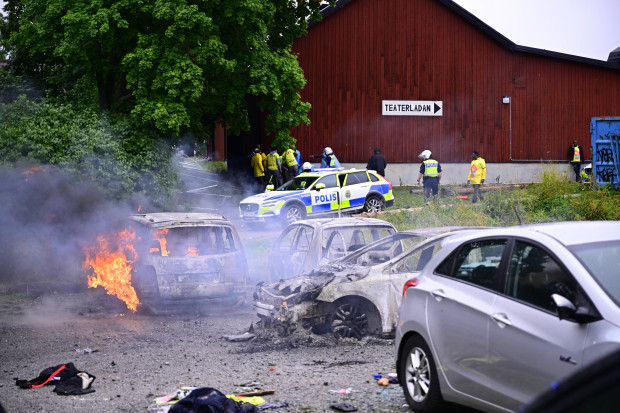
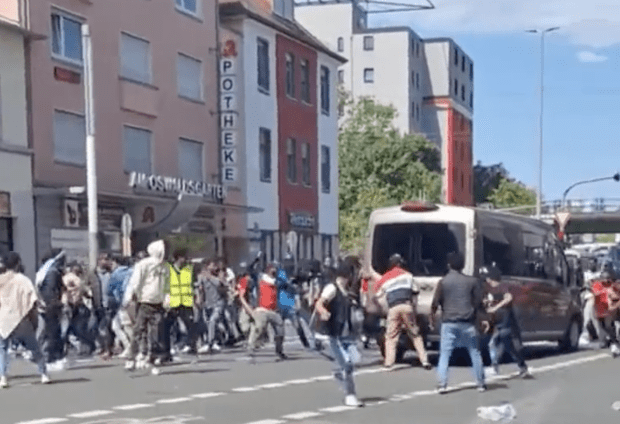
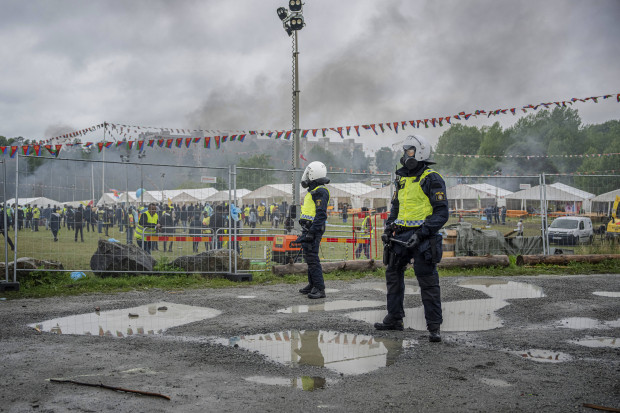
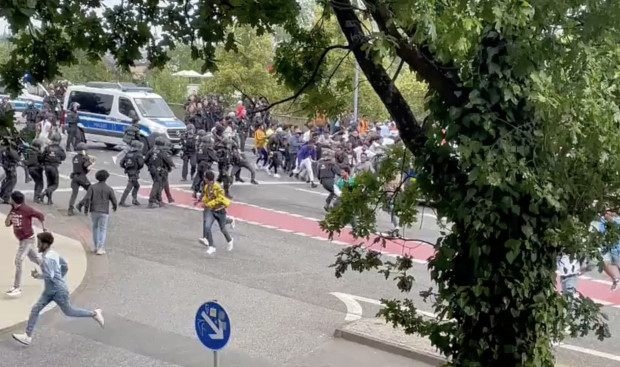


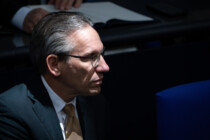



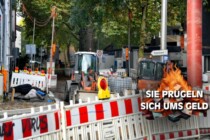
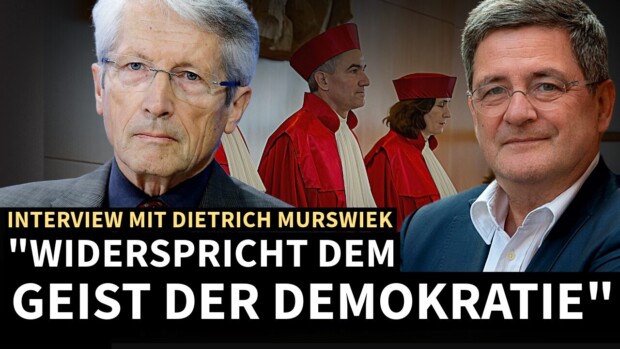
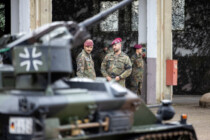
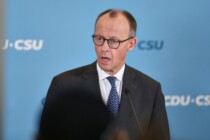
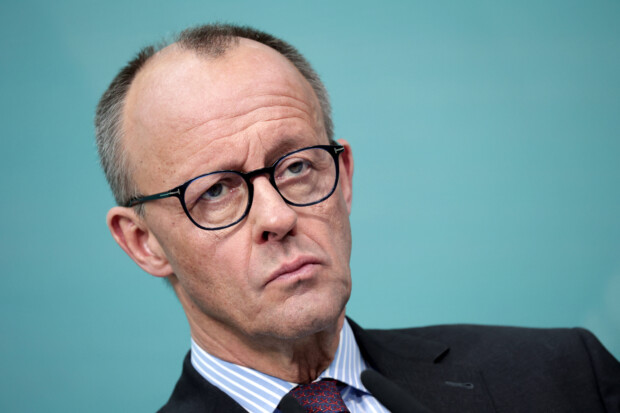




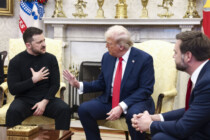
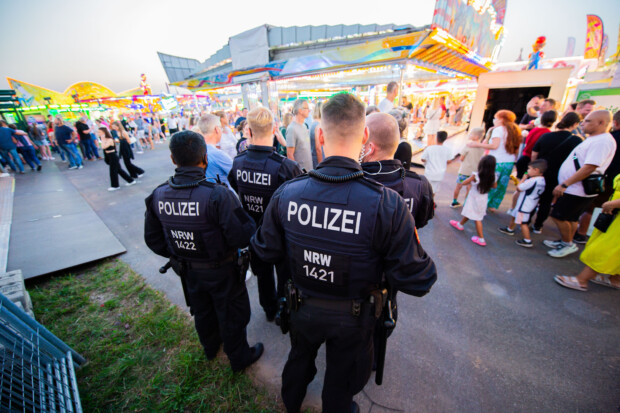
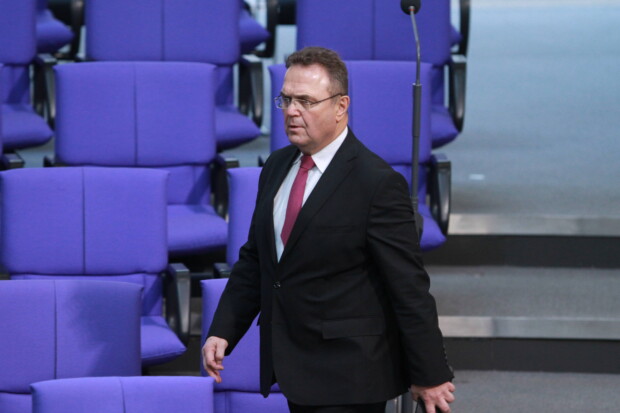

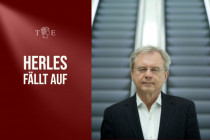



Sie müssenangemeldet sein um einen Kommentar oder eine Antwort schreiben zu können
Bitte loggen Sie sich ein
Es paßt doch alles zusammen. Die Ideologie der Grünen wünscht sich und regiert unser Land zurück in die angeblich CO2-neutrale Steinzeit, deren wichtigste Erfindung das Messer mit Steinklinge und Holzgriff war. Folgerichtig werden im Umgang damit gut vertrauten Fachkräfte angeworben. Diebstahl, Belästigung und Vergewaltigung als weitere Kernkompetenzen bringen die auch gleich mit. Dies alles gab’s mit Sicherheit schon vor ein, zwei Millionen Jahren. Fragen sie Fred Feuerstein, der durfte sogar noch echte Pelze tragen.
Zum Nachdenken:
In Deutschland gibt es offiziell 400.000 Afghanen. Angenommen nur die Hälfte sind Männer, dann sprechen wir von 200.000 Mann, einer Armee!
Wieviel haben wir an Soldaten und Polizisten entgegenzusetzen?
Wahrscheinlich sind eher 380.000 männlich. Aber keine Sorge, über 90% davon sind bestimmt nur harmlose Minderjährige („Forever 17“) ohne jegliche Ausweisdokumente.
Passend dazu ein Volk das völlig ohne Waffen dasteht. Entwaffnet von einer Politikerkaste die sich vom eignen Volk am meisten fürchtet mit einem Waffengesetz das Rechtschaffene bestraft und Verbrecher belohnt. Wer das Deutsche Waffengesetz kennt weis das es extrem teuer und zeitaufwendig ist in Deutschland legal eine Waffe zu besitzen, dagegen sehr leicht sich im Ausland illegal eine Waffe zu beschaffen und über die offenen Grenzen nach Deutschland zu bringen. Daher sind hier die allermeisten Waffen in Privatbesitz illegal und viele dieser illegalen Waffen in Händen von Leuten die sich um die hier geltende Gesetzeslage sowieso nichts scheren. Es ist… Mehr
Gute Frage. Ich schätze, dass die Bundeswehr zwischen 20.000 – 30.000 Soldaten hat, die ihr Handwerk beherrschen. Für diese Truppe ist dann wohl ein Munitionsvorrat von 5 Tagen vorhanden. Weitere 100.000 Berufssoldaten haben wohl einen Büroarbeitsplatz und sind wahrscheinlich kaum in der Lage, sich selbst zu verteidigen.
Und das beste ist, die gesamte Logistik und Versorgung übernehmen wir für diese Herrschaften, die müssen sich um nichts kümmern, ausser ihre Ziele zu verfolgen.
Bereits 2016 sagte ich, wir haben die 5 fache Stärke der Bundeswehr ins Land gelassen – viele kampferprobt und kampfeswillig.
Inzwischen dürften wir bei der 20 fachen Stärke der Bundeswehr sein….